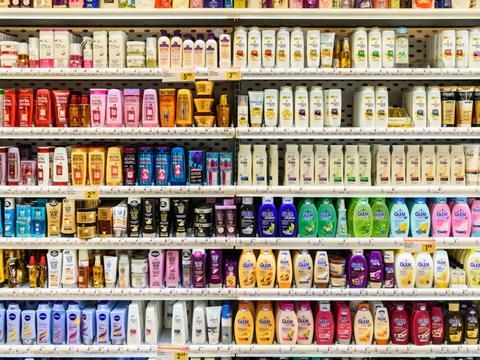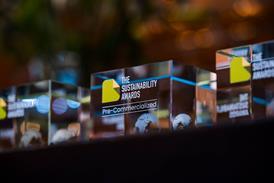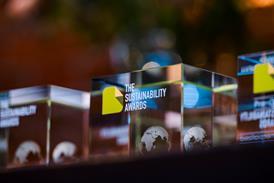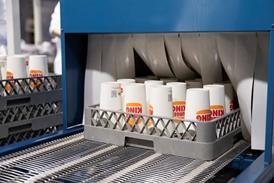
While the old supermodel adage “you can never be too thin” has been consigned to the fashion archives, smaller really can be better when it comes to packaging. Specifically, McKinsey believes that “skinny design” – using fewer materials in packaging, choosing different materials, or rethinking the package shape – is a rare case of a win-win-win practice with benefits for business, the environment, and the consumer. In this article, three experts from McKinsey – partners Dave Fedewa and Benedict Sheppard, and design director Lea Kobeli – tell us more.
The business benefit
Smaller, more intelligently designed packages mean that more units occupy the same amount of space and potentially also weigh less. This has all kinds of good consequences, starting with more efficient warehousing, and then fewer containers and truck trips.
Once in the store, getting the goods onto shelves requires less labor because there is simply more stuff on each pallet. And having more on the shelves translates into fewer stockouts; even an increase of 5 or 10 percent of products on the shelf can have a meaningful impact on sales. All told, we estimate skinny packaging could bring topline growth of 4 to 5 percent, and savings of as much as 10 percent.
The environmental benefit
There are three ways this works. First, almost by definition, skinnier packages use less material and thus less energy, too. Second, more efficient and lighter designs mean more units can be loaded per container and per truck, reducing diesel use and carbon footprints. And third, stricter regulations becoming a driver of more sustainable alternatives.
As producers think about how to make their packaging skinnier, that is a good time to think about its composition. It may be possible, for example, to replace the mostly banned expanded polystyrene foam cup with molded pulp, which is biodegradable. Other recent examples include plastic-free toilet paper packaging; for a product that so often markets itself as made from recycled materials, finishing with a layer of plastic seems counter-intuitive.
The consumer benefit
The bottom-line savings companies earn can translate into lower-priced goods, helping consumers struggling with persistent inflation. In addition, the demand for greener products is growing. Almost four out of five US consumers in a recent survey said sustainability is important, in 2020, three out of five said they would pay more for green options, and in the past five years, products making ESG-related claims have accounted for 56 percent of growth. It’s worth noting, though, that price, quality, brand, and convenience mattered more.
Many executives note that their explicitly sustainable products are not, in fact, flying off the shelves. But the demand is there, and growing: recent research found that products that made an environmental claim on their packaging averaged 28 percent growth from 2017 to 2022, compared to 20 percent for the rest. And those making multiple ESG claims grew about twice as fast as products making a single ESG claim. In short, consumers do value sustainability, and not just theoretically.
That is the case for skinny design. Of course, it is much easier said than done.
For something that sounds relatively straightforward, skinny design requires a high degree of cross-functional collaboration—everything from product development to procurement, manufacturing, shipping, and marketing. One problem is misaligned incentives: because many companies do not allocate freight to specific products, the savings are not reflected in EBIT calculations. There is also the human element; it can be difficult to figure out who gets credit for the value created, reducing the incentive to change.
And the trade-offs can be tricky. For example, a footwear manufacturer would have to evaluate the potential of making smaller boxes for smaller shoes versus the efficiency of having a standard box size. Marketers will note that a smaller package means less room for information about the product; is packing more shelf space worth losing some of this “billboard?” It’s about finding a balance between cost, competitiveness, and sustainability, while delivering what consumers want.
Skinny design is still in its infancy. But we know it can work: one excellent example is concentrated laundry detergent, and there have also been successes in LED bulbs, food, industrial tools, and small consumer electronics. We believe that, with imagination and commitment, such a sweet spot exists for many more.
Moreover, it fits in well with the acceleration of e-commerce and redesigning products with shipping volume as a key driver, where package appearance is less important to shoppers, and shipping costs more so. And it is consistent with the growing recognition that great design delivers results, in the form of growth and shareholder value.
For new products thinking about all these considerations from the start can help spark solutions. For existing products, a dedicated packaging team can be tasked with reviewing opportunities. And for all kinds, a growing number of digital tools, such as finite-element analysis, can speed up the testing of packaging configurations and materials. Using artificial intelligence techniques, new generative design systems can explore thousands of simulations, with minimal waste.
In today’s context of inflation and still-balky supply chains, skinny packaging can help consumer companies capture value that is now all but invisible. To turn to another cliché, sometimes less really can be more.
If you liked this article, you might also enjoy:
The L’Oréal approach to packaging sustainability
What steps is Apple taking to make its packaging more sustainable?
How did Brazil achieve its 100% aluminium can recycling rate – and can it be replicated in the EU?
Experts have their say on the EU’s Packaging and Packaging Waste Directive revisions


















No comments yet